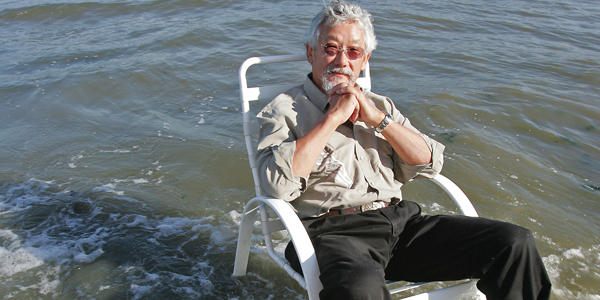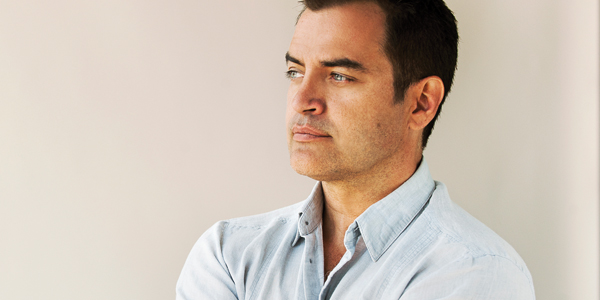Leadership is a mysterious and elusive concept. What we read as history is really the creation of myths. From an ordinary person, society creates a Napoleon, or Gandhi, a Martin Luther King or Joan of Arc, someone who acquires mythic status as a shaper of destiny. We know the first steps of how this transformation occurs. Every group naturally gives rise to leaders who guide their followers to a shared goal. Yet some leaders fail while others succeed. Some are destroyed by a flawed strategy or by the overwhelming stress of their role. And when crisis arises, calling for great leaders, there is a constant threat that such a figure will not appear, leaving the infamous ‘leadership vacuum’ that has become a chronic problem in modern society. Are we too suspicious of leaders to make great ones anymore? The answer lies in the understanding of human consciousness.
How do leaders emerge from ordinary lives? In the deeper reality, a family in disarray, a company without vision, or a nation struggling toward a new level of freedom need to respond to hidden spiritual drives. Once this is understood, leaders can be made who rise to the highest levels of greatness. Any person, man or woman, can begin on the same road, not by being born a leader but by looking inward.
Our souls offer the highest inspiration at every moment. We see chaos, but the soul knows that order is more powerful than disorder. Until we get that message, we fall back on old habits and stale answers to new challenges. We become stuck in pointless struggles and confusion. Yet someone who has set out to become a leader will succeed by cutting through the fog, using fundamental spiritual rules. A Bill Gates or a Winston Churchill undertook this journey consciously — however much we clothe them in mythic status. They have tapped into a source of truth that remains constant throughout history.
In any group the members are acting out two basic themes in life – need and response. If we could see ourselves clearly, each of us would realize that every day:
• There is something we need, ranging from the primitive need for food and shelter to the higher needs of self-worth, love and spiritual meaning.
• There is some response to fill that need, ranging from struggle and competition to creative discovery and divine inspiration.
These two themes dominate our inner life. They override all external goals and they are not random. Needs and responses can be organized in rising order. Lower needs are followed by higher ones. (As Bertholt Brecht declared, “Don’t talk to me of my soul until you’ve filled my stomach.”) I call this the hierarchy of need and the hierarchy of response. Putting the two hierarchies together is the most powerful thing a leader can do.
For example, extreme political movements (fascism, religious fundamentalism, ethnic nationalism) draw upon fear, the most primitive response of a group because it matches the most primitive need, which is survival. External pressures such as economic depression, social migration, and competitive forces generally trigger this need. Vaclav Havel, on the other hand, was a poet called upon to fulfill a country’s need for self-expression and freedom after the Communists had suppressed both. Martin Luther King climbed to an even higher level of response, that of vision, because people needed to acquire meaning and self-worth. Buddha and Christ offered the highest level of inspiration to fill the universal need for unity with God.
In hindsight we realize that it took a shift inside Dr. King for the Civil Rights Act of 1964 to be written. The trick is to see down the road now, to fathom the future as a movement inside yourself. There is no mystery to this. The ability to match need and response can be learned.
I believe that it is possible to master every level of a group’s inner life, applying the same knowledge to a family as to a corporation. (One can read father, mother, priest, sage, or president in place of the word leader.) Let me outline the fundamental principles involved:
1. Leaders and followers co-create each other. They form an invisible spiritual bond. Leaders exist to embody the values that followers hunger for, while followers exist to fuel the leader’s vision from inside themselves.
2. A leader is the symbolic soul of the group. The soul is an archetypal expression of who we are. Everything dynamic about us comes from this deeper level of spirit. Because individuals grow from the inside out, so do groups. Sometimes a group needs a parent or protector, at other times a ruler, muse, or visionary. The leader operates from the soul level to cause these shifts, which then get expressed on the surface as success.
3. Inner qualities determine results. The outcome of any situation is defined in advance by the vision that goes into solving it. Therefore inner qualities determine all results.
4. A multitude of responses must be known to a leader. The responses shared by both leaders and follower are fight/flight, ego, inner direction, knowingness or intuition, creativity, higher guidance, and unity. A mixture of these responses is arising in our brains every day. One or more response goes into every situation and therefore must be known by the leader.
5. A leader must understand the hierarchy of needs. Just as there is a rising hierarchy of responses built into us, there is a rising hierarchy of needs that the leader must understand. These are: the needs for survival, safety, achievement, belonging, expression, self-esteem, freedom, love, and spiritual worth. All are inner needs that have evolved over time in the life of societies.
6. For every need, the right response can be found. This match is not made randomly – the soul knows how to fulfill any need with the least effort and struggle. A leader who can tap directly into this knowledge gains tremendous power, far more than someone who concentrates only on external goals and rewards.
7. Understanding need and response leads to success. The leader who understands the hierarchies of need and response will succeed; the leader who aims for only external goals (money, victory, power) will falter in the area that counts most: fulfilling the lives of his followers.
8. Great leaders are those who can respond from the higher levels of spirit. They understand that their followers yearn for freedom, love, and spiritual worth. Therefore they respond with creativity, vision, and a sense of unity. But no one begins at the top. A lower need like the need to feel safe must be understood first. The problem at hand can be as trivial as winning a baseball game or as profound as leading a society out of crisis. By climbing the hierarchy of need, any group can be made to feel inspired and unified. Great leaders are in touch with every level of human experience.
9. Leaders give of themselves by their willingness not to hide from any response as it is needed. The leader is also an Everyman. It is just as important to say “I am afraid” as “I am strong.” Leaders who protect themselves emotionally, who limit their responses to only a few, or who cling to ego wind up being destroyed. Their success in material terms will be devoid of inner worth. Present models, which focus on ego drive and external reward, miss how selfless an effective leader must be.
10. A leader must be comfortable with disorder. No matter how complex and confusing a situation looks, leadership is possible from one simple attitude: Being comfortable with disorder. Leaders thrive on disorder once they see the hidden spiritual order that lies beneath. This is the central idea. One must learn how to manage the fact that hierarchies are tangled. There is always a jumble of needs and responses that must be sorted out. Otherwise, groups will be crippled in turmoil. Fear and survival, competition and creativity, vision and love, make their own demands. They each have a voice, whether we hear them or not. Yet underneath there is only one voice, the silent whisper of spirit, which understands everything.
When the final story is told, leadership is the most crucial choice one can make – it is the decision to step out of darkness. Only someone who can find wisdom in the midst of chaos will be remembered as a great leader. Yet matching needs and responses is our birthright, built into our brains as well as our spirit.
A leader may never find occasion to tell his followers why he has enriched their life or raised them to the level of the soul, yet in his heart he will know that he did those things for himself. That is enough.
Wisdom traditions define truth as a single spark that burns down the whole forest. If the leader is willing to be that spark, others will see it within him. Craving direction, they will value what he offers, which is the first step toward valuing it in themselves.
Mental Template
Although leadership looks immensely complex, the essentials can be grasped by looking at the following easily learned acronym.
L: Look and listen. Do this with your senses, being an unbiased observer who has not judged anything in advance, then with your heart, obeying your truest feelings, and finally with your soul, responding with vision and creativity.
E: Empowerment. This comes from self-referral, which is responsive to feedback but independent of the good or bad opinion of others. It is process oriented rather than outcome oriented. It raises the status of leader and follower together.
A: Awareness. This means being aware of the following questions that underlie every challenge: Who am I? What do I want? What is my life purpose? The leader must ask these questions of himself and inspire his followers to ask for themselves.
D: Doing. This covers being action-oriented as a role model, being responsible for the promises one has made, being persistent, but also having the ability to celebrate and view any situation with flexibility and humor.
E: Emotional freedom and empathy. The leader moves beyond melodrama and crisis reaction, getting rid of emotional toxicity to understand the deeper needs of his followers-cutting through fear, depression, and the noxious residues of competitiveness.
R: Responsibility. This means showing initiative, taking mature risks rather than reckless ones, walking the talk, having integrity, and living up to your inner values.
S: Synchronicity. This is a mysterious ingredient from the unconscious that all great leaders harness. Synchronicity is the ability to create good luck and find reserves of power to carry a leader beyond predicted outcomes to a higher plane. Synchronicity is the ultimate ability to connect any need with an answer from the soul.
All models of leadership give the same general advice to look and listen; however it is important to realize that L-E-A-D-E-R-S means something different at every level. Flexibility is key. As new needs reveal themselves, there is a new level of looking and listening. Immediately the rest of the acronym also shifts, leading to new action and a higher level of responsibility.






